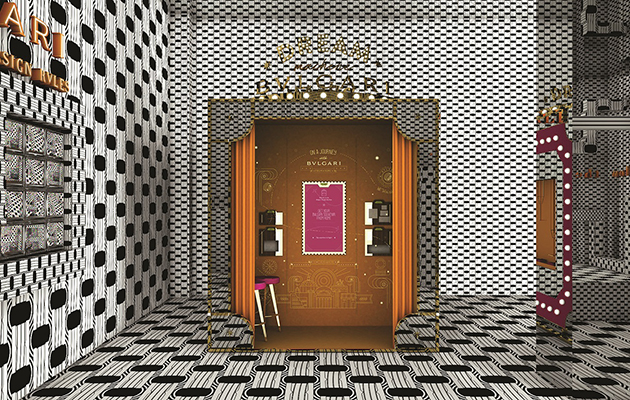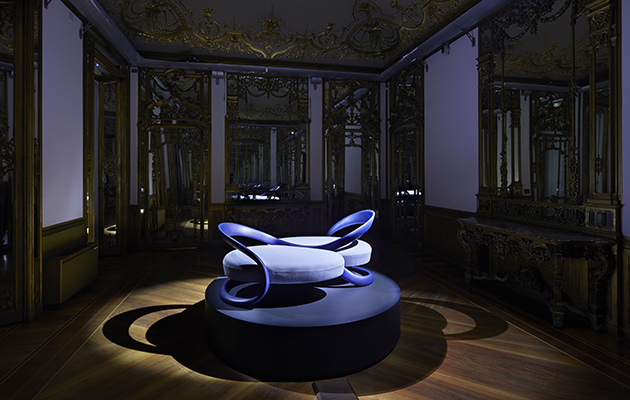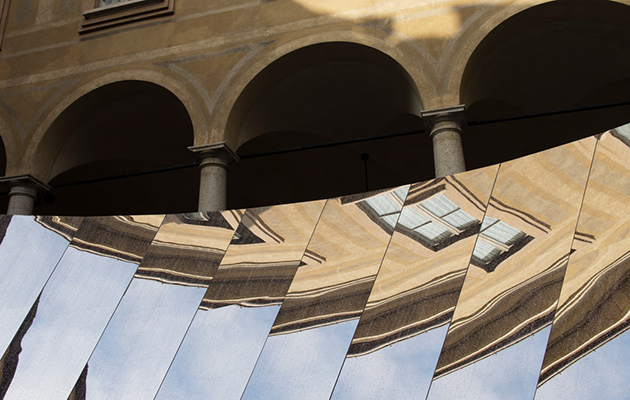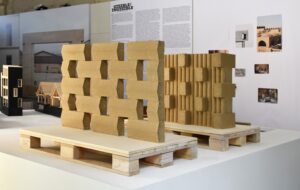
The takeover was swift and efficient; today it’s the fashion houses pushing the envelope during Milan Design Week, writes Rita Lobo.
Milan has always been the fashion capital of Italy, but historically, the great Milanese fashion houses have piped down for Milan Design Week and let the city’s many accomplished furniture brands take over. But as the Fuorisalone increasingly makes space for non-furniture design companies and designers choose to partner with global brands for installations, the local fashion industry has seen the door open for them to elbow their way in.
The takeover has been swift and effective. This year some of the most striking installations at Milan design week have come courtesy of fashion houses – a tangible exemplification of how Salone del Mobile has morphed from a furniture fair to a festival of all facets of design. Fashion brands have resources and there is no question that when the likes of Hermes or Louis Vuitton choose to put their hands in their very deep pockets, then something big will come out. For better or for worse, fashion brands have raised the bar of showmanship when it comes to Milan design week.
Bulgari had no fewer than three separate installations the largest of which was set within a 1,000 sq m site at the Brera Bulgari Hotel Milano, united by the them Reinventing (design) rules (pictured above). The most striking room, the ‘dream factory’, was a labyrinthine funhouse of optical illusions, covered by black and white wallpaper based on the Roman brand’s classic B.zero 1 line. As well as visually striking, the space was deeply conceptual, exploring how jewelry design – typically small and opulent – can be translated into a macro space.
 André Fu’s Ribbon Dance conversation chair at the Louis Vuitton Objets Nomades. Photo: Louis Vuitton
André Fu’s Ribbon Dance conversation chair at the Louis Vuitton Objets Nomades. Photo: Louis Vuitton
Louis Vuitton has been participating in Fuorisalone since 2015, but this years’ Objets Nomades installation in Palazzo Bocconi in the exquisite Corso Venezia might have been its most delicate yet. The French luxury fashion house partnered with a constellation of design stars including India Mahdavi, Tokujin Yoshioka, Raw Edges, Barber & Osgerby, Nendo, Maarten Baas to occupy the opulent halls of the Palazzo Bocconi with a series of objects embodying principles of movement, transformability, and flexibility. A chair, a longer, a diamond wall mirror were all part of the installation, but most remarkable was the field of leather flowers created by Atelier Oï.
 Phillip K Smith III’s Open Sky for Cos reflected the arches of Palazzo Isambardi. Photo: Cos
Phillip K Smith III’s Open Sky for Cos reflected the arches of Palazzo Isambardi. Photo: Cos
Cos was behind one of the most high-profile installations at Fuorisalone: Open Sky, a partnership with Phillip K Smith III. Set in the courtyard of 16th century Palazzo Isambardi, a faceted mirror structure greeted visitors with a panelled reflection of the azure skies above. It’s not Cos’ first Fuorisalone outing, the cool Swedish clothing brand has previously partnered with Sou Fujimoto, Nendo, Snarkitecture, and Studio Swine producing installations of increasing size and complexity. This year, visitors were encouraged to view the mirrors at close range, experiment with reflections and photography, inviting us to view the world through a shifting, temporal lens.

















